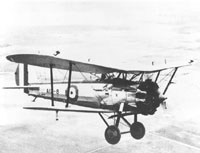


RAAF Meteorological Service
Foreword
Introduction
Chapter 1: The Weather Factor in Warfare
Chapter 2: Establishing and Developing the RAAF Directorate of Met. Services (D.Met.S)
Chapter 3: Recruiting and Training of Personnel
Chapter 4: Meteorology in Aviation
The RAAF Meteorological Flight
Hazards Galore
Chapter 5: The Met. Retreating
Chapter 6: The Met. Advancing
Chapter 7: The Met With the Army and the Navy
Chapter 8: Divisional Offices of the Bureau of Meteorology During the War
Chapter 9: Research and Instrumental Development
Chapter 10: The End, Aftermath, and Beyond
Appendix 1
Appendix 2
Appendix 3
Appendix 4
References
Index
Search
Help
Contact us

The RAAF Meteorological Flight
Mainly because of the dramatic growth of military aviation, and the intensified use of artillery bombardment, observations of upper winds, temperatures and pressures had to be made by pilot balloons, by meteorological flights in aircraft, and eventually by radiosonde. Modern aviation demanded forecasts of weather conditions in the upper atmosphere as well as on the surface.
Air-Commodore O. G. Heffernan OBE, AFC, related, in the magazine 'Stand To':
'Sometime during 1930, the Weather Bureau obtained RAAF approval to do a daily flight to 16,000 feet. During this flight the pilot took wet- and dry-bulb temperature readings at each 2,000 foot level, noted cloud formation and any other meteorological data that could be of interest. The thermometers were strapped to the outer wing struts.'[30]
The inauguration of the meteorological flights coincided with the arrival in Australia of eight Bristol Bulldog single-seater fighter aircraft—purchased surplus from Britain—in 1929.

Heffernan described a typical meteorological flight:
The aircraft would be started up at 0845 hours ready for take-off at 0900. If it was a clear day, the flight presented no problem as one could choose any part of the sky to operate in. In such case, the pilot after taking off usually climbed towards the north. At each 2,000 feet, the aircraft was flown level for two minutes, and the meteorological readings were taken and noted on a knee pad. This procedure was repeated until 16,000 feet was reached, when the descent commenced, and readings were taken again. Back at Point Cook the pilot telephoned the Weather Bureau and passed the information to the duty officer, and answered any questions he might be asked.''However, overcast days presented quite a problem. As most people know, Melbourne has a range of hills to the east and the north which go up to 4,000 feet within 40 miles of the city. Even to the west, the land goes up to 2,000 feet. Therefore, the only open space is to the south over Port Phillip Bay. Let us assume that a south-west wind was blowing, as was frequently happening at (say) 25 mph. In a flight of one hour the whole airmass would move 25 miles to the north-east, right over the start of the Great Dividing Range. One must also remember that once an aircraft is airborne, it becomes part of the airmass. Therefore, on such a day, the pilot tried to allow for such a movement of the air by flying into the wind for the last 15 minutes of the flight. Now, providing that the wind direction remained constant all the way up to 16,000 feet, by using such a method, the pilot usually broke cloud somewhere in the vicinity of Point Cook.'
 |
Bureau of Meteorology |  |
© Online Edition Australian Science and Technology Heritage Centre and Bureau of Meteorology 2001
Published by Australian Science and Technology Heritage Centre, using the Web Academic Resource Publisher
http://www.austehc.unimelb.edu.au/fam/0248.html